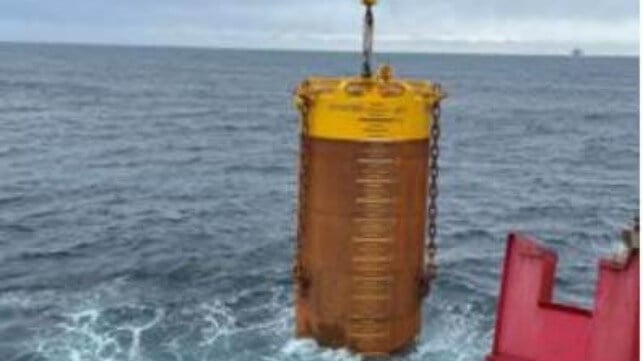BOEM Completes Review for Alternative Foundation Test at BP’s Beacon Wind

The U.S. Department of the Interior’s Bureau of Ocean Energy Management completed its environmental review clearing the way for testing of an alternative foundation for the Beacon Win site located south of Nantucket. The site now controlled by BP proposed additional site testing for a lesser-used technology called suction bucket foundations which allows for the installation of turbines without the need for pile driving.
Deployed for the first time a decade ago, the suction bucket has been used several times in European offshore wind farms, including projects led by Ørsted. The application by BP highlighted advantages including less noise by not having to pile drive and less disturbance of underwater life. BP and its partners have also been exploring the use of the foundation system for their developments in Europe.
The technology has been used in various forms since the 1980s in the offshore oil and gas industry. Ørsted explains that one of the key considerations is soil type and soil strength as well as issues such as the composition of the sea bed if boulders or other obstacles exist. They require a larger footprint and scour protection.
Beacon Wind proposed to conduct 35 deployments and removals of a single suction bucket foundation at 26 locations on its site. Beacon Wind’s objective is to gather information to support the engineering design of the turbine and substation foundation. Among the other advantages, Beacon Wind says suction bucket foundations would allow more flexibility around supply chain constraints.
The proposal explains that the suction bucket used in the test will have a diameter of 30 to 39 feet (9 to 12 meters), a height of 36 to 39 feet (11 to 12 meters), and total weight of approximately 200 tons. The suction bucket will be designed to penetrate the seafloor to a maximum of between 33 and 39 feet (10 and 12 meters), versus a monopile which they pile drive to three times that depth. A low-flow suction pump is mounted to the top of the suction bucket approximately 19 feet (6 meters) above the seabed and slowly removes water from within the bucket to create an area of reduced pressure, which would assist in completing penetration to the target depth and affixing the structure to the seabed for the mounting of the topside turbine or substation.
BOEM concluded that the proposed test will not cause significant impacts to the environment. Beacon Wind’s review with the BOEM began nearly a year ago. It calls for two phases, with the first project for 1,230 MW located 17 nautical miles south of Nantucket and 52 nautical miles east of Montauk and supplying power to New York State. A second phase of a similar size is also contemplated on the lease area which totals 128,000 acres in federal waters.
In April, BP took full ownership of Beacon Wind after splitting its partnership with Equinor. They took over the 50 percent interest in the project. while Equinor took ownership of BP’s 50 percent stake in the Empire Wind 1 and 2 projects.
